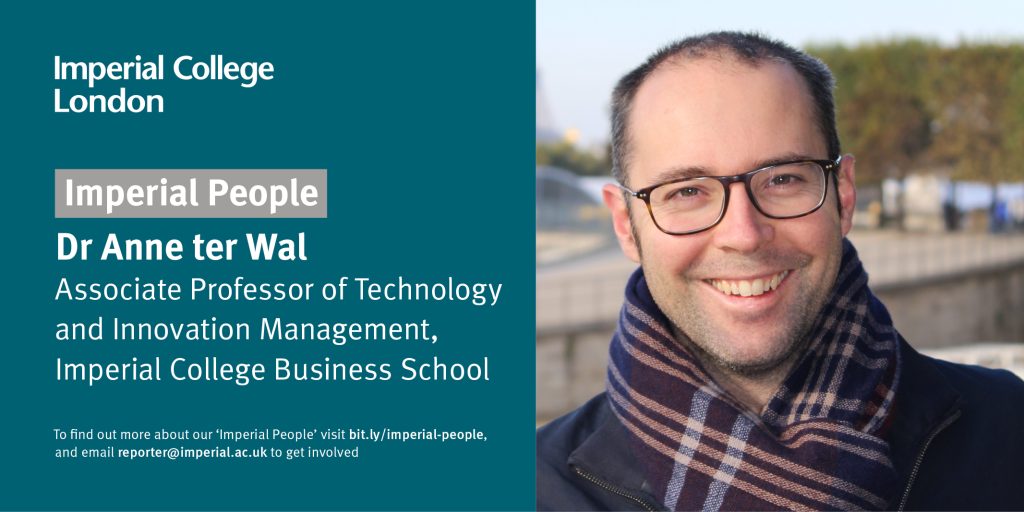“The invisible webs of connections that we all have bear a strong influence on the ideas we develop and promote.”
I joined Imperial over twelve years ago, straight after finishing my PhD in the Netherlands, where I grew up. Currently, I lead an EU-funded research program titled “Networking for Innovation” to study how networking enables entrepreneurs and innovators to achieve business and innovation success. Together with a diverse team of postdocs and PhD students, as well as local and international collaborators, I seek to understand how individuals go about building the connections they need and assess how different approaches to building and mobilizing these connections help individuals to innovate.
Networks are a fascinating field of study. Behind the scenes, the invisible webs of connections that we all have bear a strong influence on the ideas we develop and promote, but some people are better able to build and exploit strong networks than others. We observed, for example, how some R&D scientists and R&D managers closely working together excelled at innovation, because they “mirrored” each other’s networks: they gained useful input from similar but non-overlapping connections which they used to challenge one another in productive ways.
We also do social science experiments. For example, we use so-called sociometric badges that allow us to observe and track how people physically navigate networking events. This allows us to learn how different networking approaches affect individual ability to make new connections or find new information.
I also teach about networks. Recently, I was pleased to be selected as one of Poets&Quants 40 Best MBA Professors under 40. For me the real excitement in teaching lies in bridging academic insight and practical guidance. At the end of my four-day class on Strategic Networking, my efforts to do so culminate in 30-odd flipcharts with the key take-home messages all over the lecture theatre walls. It has helped to make the course and its content more accessible and more memorable.
In my free time, I collect 1/43 scale miniature car models. Much to my husband’s “joy”, there are over 300 model cars on display in our hallway and in my home office. These are mostly cars from the 1980s and 1990s, the everyday cars that populated our streets when I grew up.
